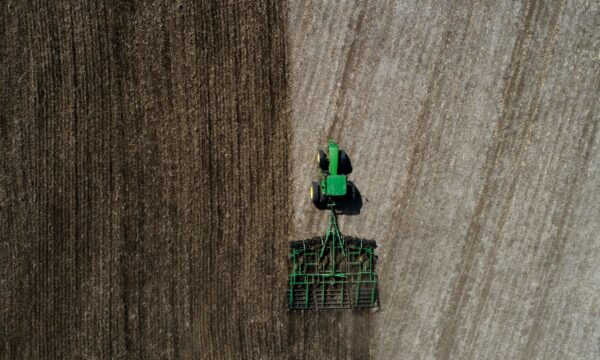
Global food consumption is predicted to increase by 51% by 2050. This is a profound challenge for our agrifood systems, which will only be made harder by the increased pressures of climate change on food security. In addition, agriculture is not just impacted by climate change; it is also a significant source of the greenhouse gas emissions driving climate change.
On the surface it may appear that these three challenges – the need for increased production, increased resilience, and reduced emissions – are incompatible. How can we increase food production without increasing emissions? Will the changes required to make agriculture more resilient impact productivity?
Climate Smart Agriculture (CSA) is an approach to agriculture designed to address all three challenges together, in an integrated way. CSA practices are not just better for the planet, but can increase productivity and provide increased security to the 3.8 billion people today living in households whose livelihoods depend to some degree on agriculture.
CSA doesn’t describe a single method but is rather a suite of traditional and modern knowledge and technologies that are better for farmers and the environment. The challenges faced by farmers and the feasibility of each solution will vary globally. Therefore, CSA doesn’t take a one size fits all approach, instead applying relevant best practices in local contexts. Not every individual practice recommended under CSA will provide improvements to all three of the challenges being targeted. Combining these practices can lead to the ‘triple win’ of increasing productivity, building resilience, and reducing emissions.
Below are some examples of practices that are encouraged in CSA:
Intercropping
Intercropping is growing two or more different crops in close proximity. There are multiple types of intercropping that involve different combinations, arrangements, and sowing time of crops. Different types of intercropping can bring different benefits. The benefits compared to monocultures can include reduced pests, improved yield, and improved soils.
Push-pull
Push-pull is a type of intercropping where repellent species are grown in proximity to the cash crop, to ‘push’ away pests, while attractive species are grown around the perimeter of the field to ‘pull’ the pests away. This can reduce the requirements for pesticides, saving money for the farmer and promoting biodiversity in the surrounding environment.
Crop rotations
Crop rotation involves growing different crops over sequential years in the same field, instead of growing the same crop in the same place for multiple years. This prevents crop-specific pests from establishing over multiple years and improves soil health.
Cover crops, catch crops and green manures
Growing non-cash crops in crop rotation with cash crops can improve the soil and help control weeds. Cover crops cover the soil between cash crops, smothering weeds and preventing soil erosion. Catch crops prevent nutrient losses through run off and leaching. Green manures capture nutrients, such as nitrogen from the atmosphere and can then be dug into the soil. This can help reduce fertilizer usage which can contribute to emissions.
Manures and organic fertilizers
Both the production and use of fertilizers can produce significant emissions, but fertilizers are important for achieving high yields. Use of organic fertilizers rather than synthetic fertilizers and reducing the amount of fertilizer used through precision fertilizing, can reduce emissions while increasing yields.
Mulches
Using mulches to cover the soil conserves moisture and nutrients, regulates soil temperature and improve soil structure. This can contribute to resilience and yield and reduce fertilizer requirements.
Conservation tillage
Conservation tillage, also known as minimum tillage, disturbs the soil as little as possible, leaving the residue from previous years crop in the field (often defined as a minimum of 30% of the soil left covered in residues). This helps prevent soil erosion, improve nutrient cycling and conserve nutrients and water.
Resistant varieties
Certain crops and varieties of crops have resistance to pests or enhanced tolerance to environmental stressors such as heat, drought, salinity and flooding. Using these varieties will increase resilience to climate change and reduced pesticide use.
Discover practical advice about climate smart agriculture
You can browse all the content in CABI’s PlantwisePlus Knowledge Bank recommending these CSA practices here
Read more
9 ways to get climate-smart agriculture to more people
What is Climate-Smart Agriculture
Related News & Blogs
Horizon scanning for climate-driven pest threats can prevent biodiversity loss
On International Day for Biological Diversity, CABI’s Dr MaryLucy Oronje looks at horizon scanning and pest preparedness – approaches that help prevent the spread of invasive species, a major threat to biodiversity. Horizon scanning for invasive pests…
22 May 2025




